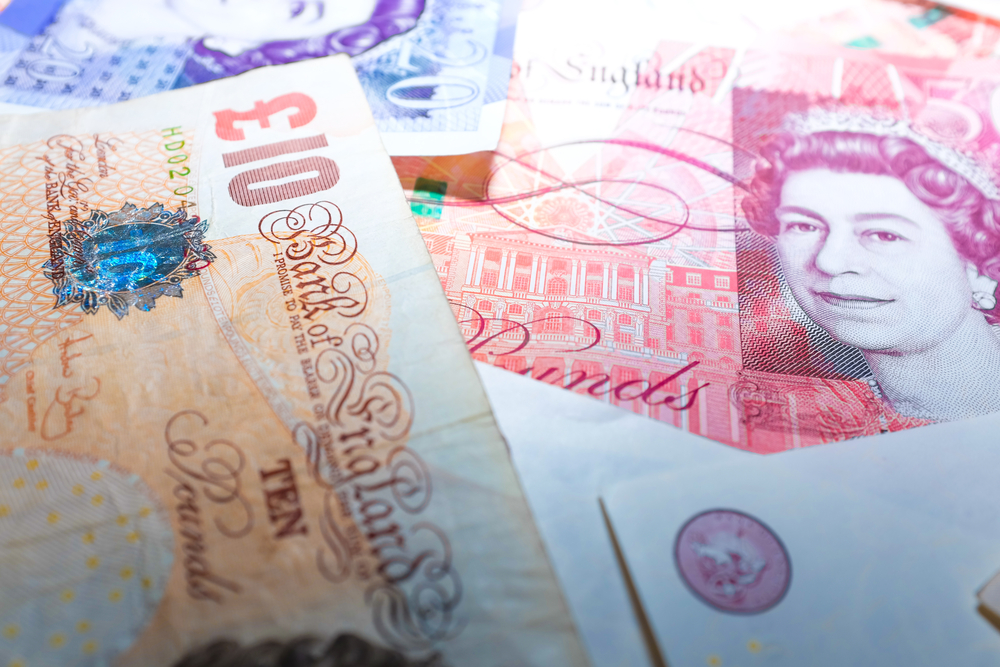14 November 2016

It's all about the MONEY
What does Sterling’s collapse mean for UK printing?
What happened to the pound?
Following the EU referendum, the value of sterling fell sharply against foreign currencies – most importantly there has been a significant devaluation against the euro and the US dollar. The major devaluation was seen at the end of June, in the immediate aftermath of the UK’s Brexit vote, and continued into the start of July. There was then some stabilisation through the remainder of July, August and the start of September. Then along came a further devaluation in September and collapse at the start of October, when Theresa May outlined the timetable for starting Brexit negotiations.
How much?
Sterling had already experienced some devaluation in the first half of 2016 amidst the uncertainty preceding the EU referendum. However, on 24th June, the day after the vote when the outcome became apparent, Sterling devalued by about 5% against the euro and 6% against the US dollar. The devaluations become 15% (against the euro) and 18% (against the US dollar) when comparing exchange rates on the day of the vote to their lows in October – when the £/$ exchange rate hit a 31-year low.
What’s next?
On Thursday 3rd November a High Court ruling stated that the UK government must consult MPs before triggering Article 50 to leave the EU – whilst the ruling is subject to an appeal and protracted political discussions – the reaction in the currency markets was immediate. Sterling climbed in value against both the US dollar and the euro.
As for what happens after this – ask any economist and they’ll give you a straight answer – “it depends”. Undeniably, forecasting exchange rates is a notoriously difficult gamble. However, we can improve our understanding.
Why do exchange rates change?
In simple economic terms, exchange rates represent the prices of currencies and as such they will fluctuate depending upon demand and supply. A high demand, or shortage in supply, will cause an increase in price – conversely a falling demand, or excess in supply, will lead to a decrease in price. Demand and supply of Sterling is affected by the UK’s monetary policy (interest rates and money supply from the Bank of England), the rate of inflation and general economic and political conditions.
For Sterling to devalue at a time when interest rates and inflation remain low (for now) then the economic and political conditions are due some scrutiny. Economic and political conditions in countries are continually being monitored and forecasted, if the economic indicators are positive then a country’s currency will have a tendency to appreciate as demand for it increases.
Similarly, a stable political environment creates a more predictable climate for investment and encourages higher exchange rates. However, if a country is exhibiting political unrest or significant levels of uncertainty (Brexit being a prime example) its currency becomes less attractive, demand falls and therefore so too does the price i.e. the exchange rate depreciates.
But what does Sterling’s depreciation mean for UK printing?
Foreign goods and services have become relatively more expensive for UK-based individuals and companies to purchase. Conversely UK goods and services have become relatively cheaper for individuals and companies abroad to purchase.
Whilst such a situation could conceivably be a desirable way for the UK economy to reduce its current-account deficit – that is dependent upon an increase in exports stimulating employment and wages, so as to offset the effects of higher import prices.
As the vast majority of paper and board used by UK printers is imported to the UK there has been upward pricing pressure on these purchases. Unfortunately, as the BPIF Printing Outlook reports have shown, the climate many UK printers operate in is one in which passing cost increases through to output prices can be incredibly challenging.
One way to mitigate the supplier cost increase effects of Sterling’s devaluation is to export – and the UK does have a healthy positive trade balance on printed products. However, with the exception of Northern Ireland (where the proximity of a land border and history of trade across Ireland makes direct exporting a common aspect of business for printers), in many cases it will be the clients of UK printers doing the exporting. Here it is the clients that will benefit from Sterling’s devaluation, and it will remain challenging for UK printers to pass price increases on to these clients.
It will take a period of time for any trade arrangements to adjust to Sterling’s devaluation. An early analysis of the latest available trade data from HM Revenue and Customs reveals that exports have generally been slightly lower in the 2016 monthly comparisons with 2015 - until August, where exports are 16% greater in comparison with 2015.

UK printers may also have some success from targeting clients that have been importing printed products to the UK – imports of printed products in 2016 to date have been lower than in the equivalent period in 2015.
So, at a time when currency has devalued, the export (or import substitution) market, offers some hope for UK printers – so long as we can keep access to our export markets! If Brexit negotiations impair this then we will be faced with the unwelcome prospect of a general economic climate of import-led price inflation; and an industry faced with an import inflation-led margins squeeze.
Downloads
 Intergraf Economic News (Paper Prices) - September 2024
Intergraf Economic News (Paper Prices) - September 2024
16 September 2024
Access the latest edition of the Economic Newsletter for the European Printing Industry for data on paper consumption, and pricing data for pulp, paper, and recovered paper.
 Applications open for the 2025 Stationers’ Company Warrants
Applications open for the 2025 Stationers’ Company Warrants
19 September 2024
The Stationers’ Company announced today that it is now open for applications for new Warrants and 2025 Warrant renewals.












